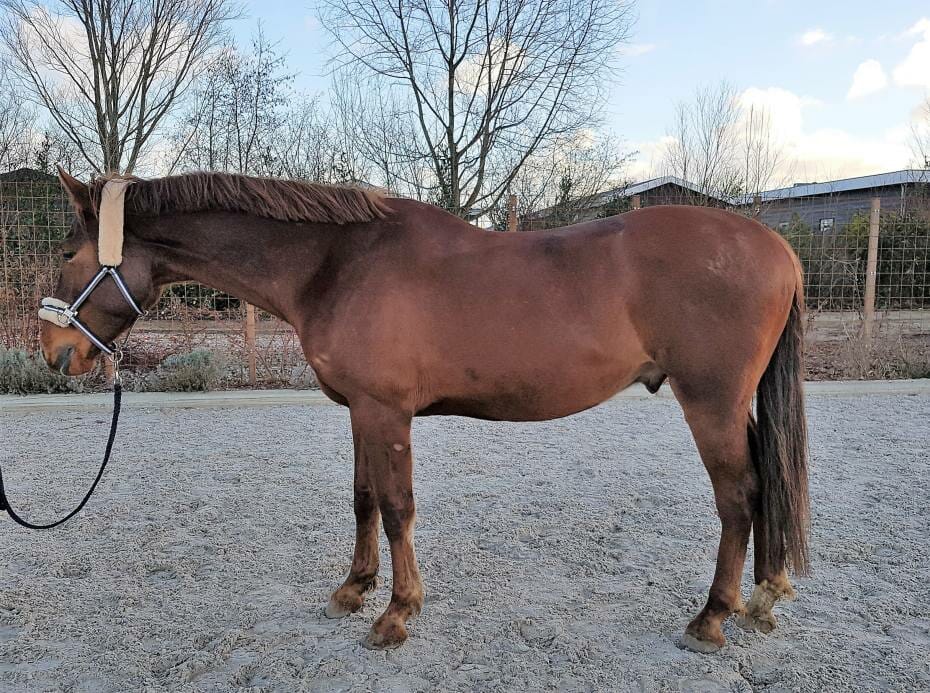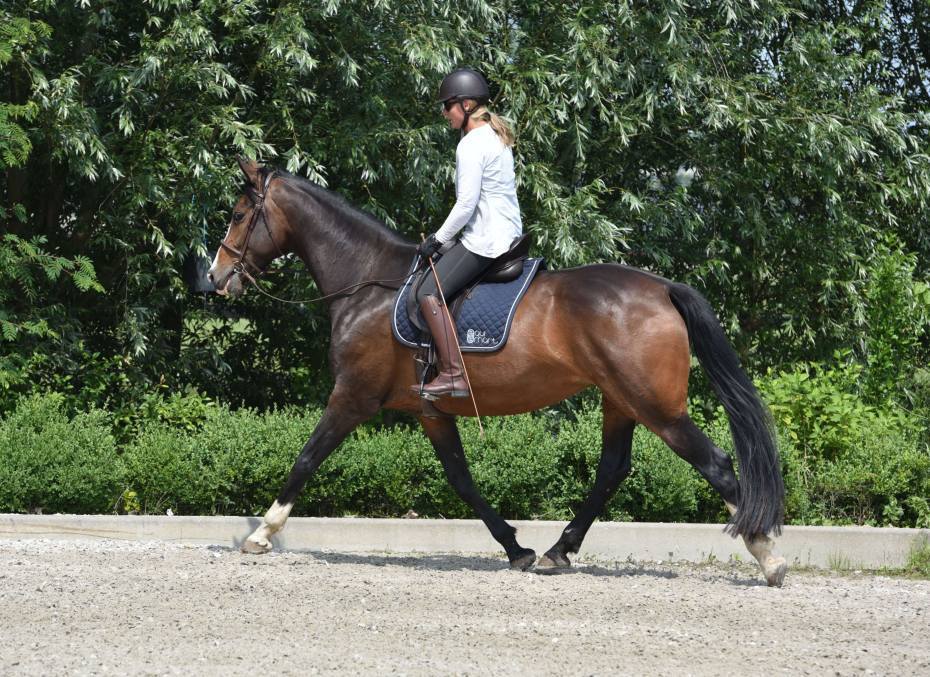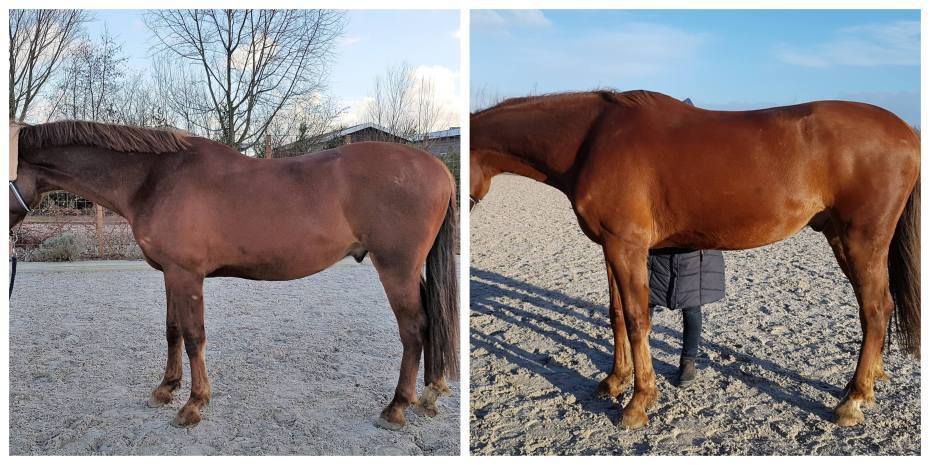The first step in training your horse

Vertical balance is an extremely important part of the training. It is actually the first step of training from the moment a horse knows how to respond to a halter and leadrope.
A horse out of vertical balance cannot relax. His back is crooked which is uncomfortable and he needs to lift his head in the opposite direction and upward to balance himself. So if the horse is falling on his left shoulder, he needs to place his head to the right and upward.

The horse in the picture above is a right bent horse. She is falling on her inside (left) shoulder. To stay in balance she needs to lift her head and place it outward. Although she has found a way to balance herself, this is not a healthy balance. Her muscles need to compensate and her back is crooked.
By now you can probably imagine how it feels for the horse if a rider forces him in an low head and neck position when he is not vertically balanced – this is one of the main reasons for resistance, back problems and eventually lameness.
A horse in vertical balance will choose to go into a forward downward and out position. The spine is straight so he can relax, wants to lower the neck and the neck follows the line of the back. If the spine is straight, the neck wants to be straight. The horse places his head straight in front of his body.
As soon as the horse finds his vertical balance, the muscles of the shoulder sling will be able to do their job of lifting the rib cage between the shoulder blades, causing the withers to rise. The tendons in the front legs will also function better, storing elastic energy and creating an effortless, gentle “bounce” against the ground.
In addition, the horse’s horizontal balance (front to back) improves by transferring some weight from the forehand to the hindquarters by closing his underline. This is impossible if the withers are sinking to the left or right instead of being lifted.

The photo above on the left shows a horse in neutral position. A posture he chooses when he is standing still. The picture on the right shows the possible wither lift and rounding of the back.
If a horse is falling on his left shoulder, the left front leg lands quicker and harder than the right front. This means that the rhythm and the tact of the horse are not correct as long as he is out of balance.
Without vertical balance the horse is not able to do lateral flexion (sidebend) – at least not in a correct way. This means that without vertical balance we can not take the training to the next level. Vertical balance really is the foundation on which we have to build the entire training and keep our horses healthy.